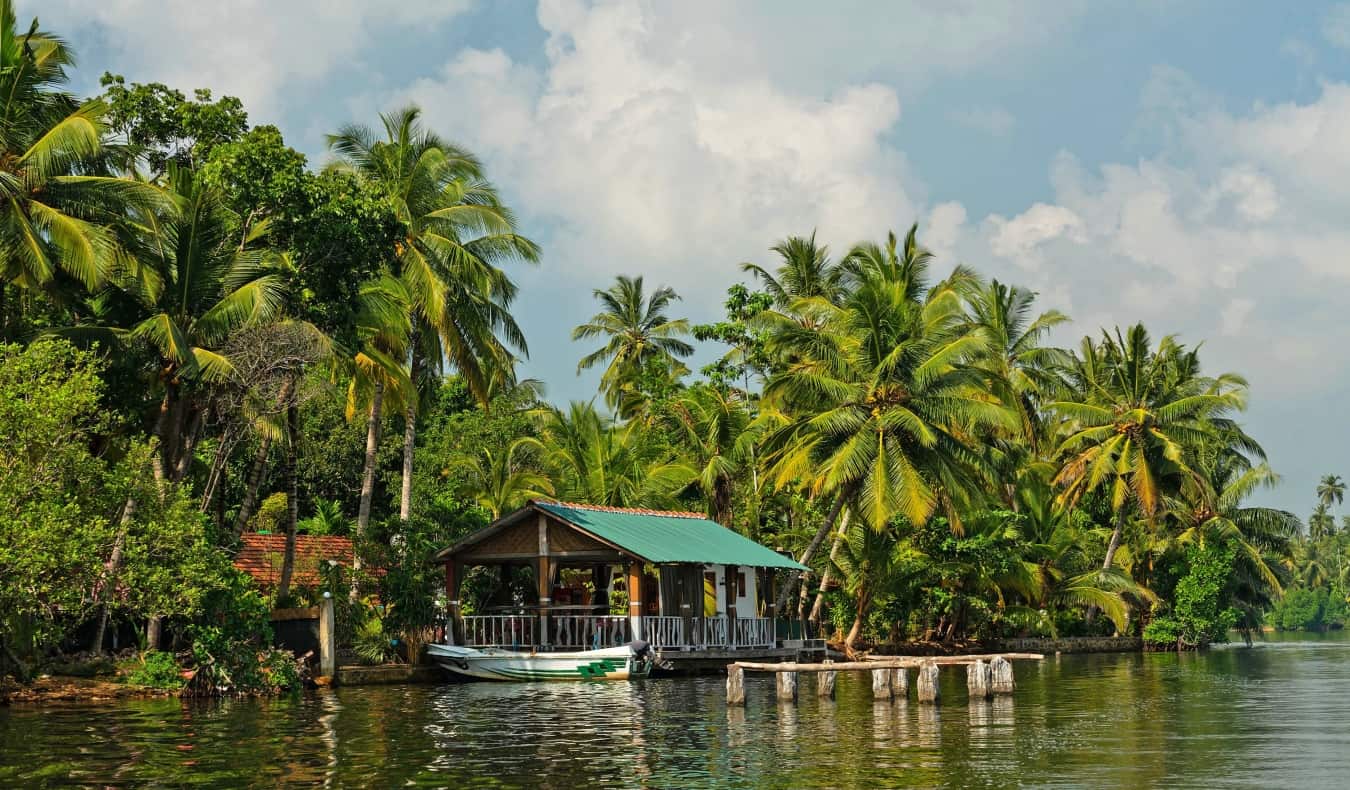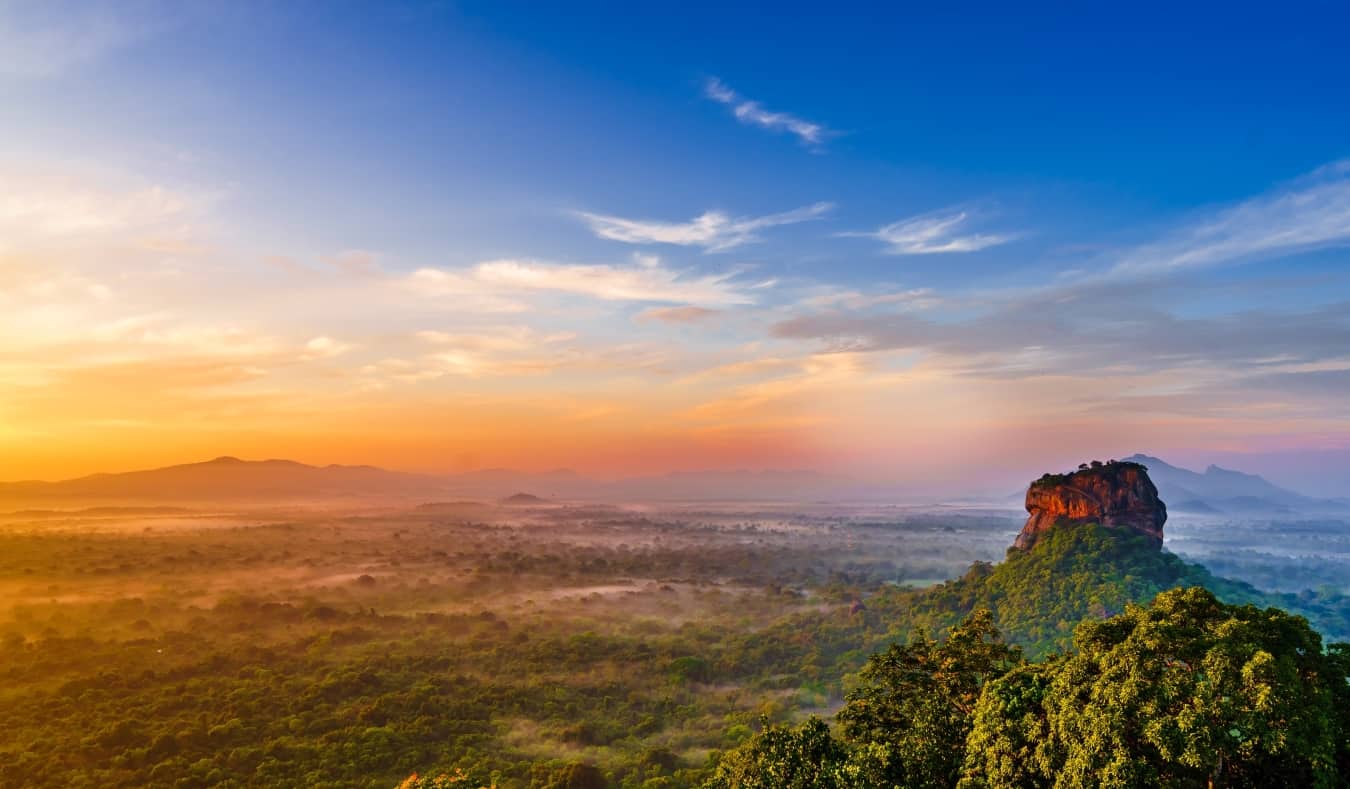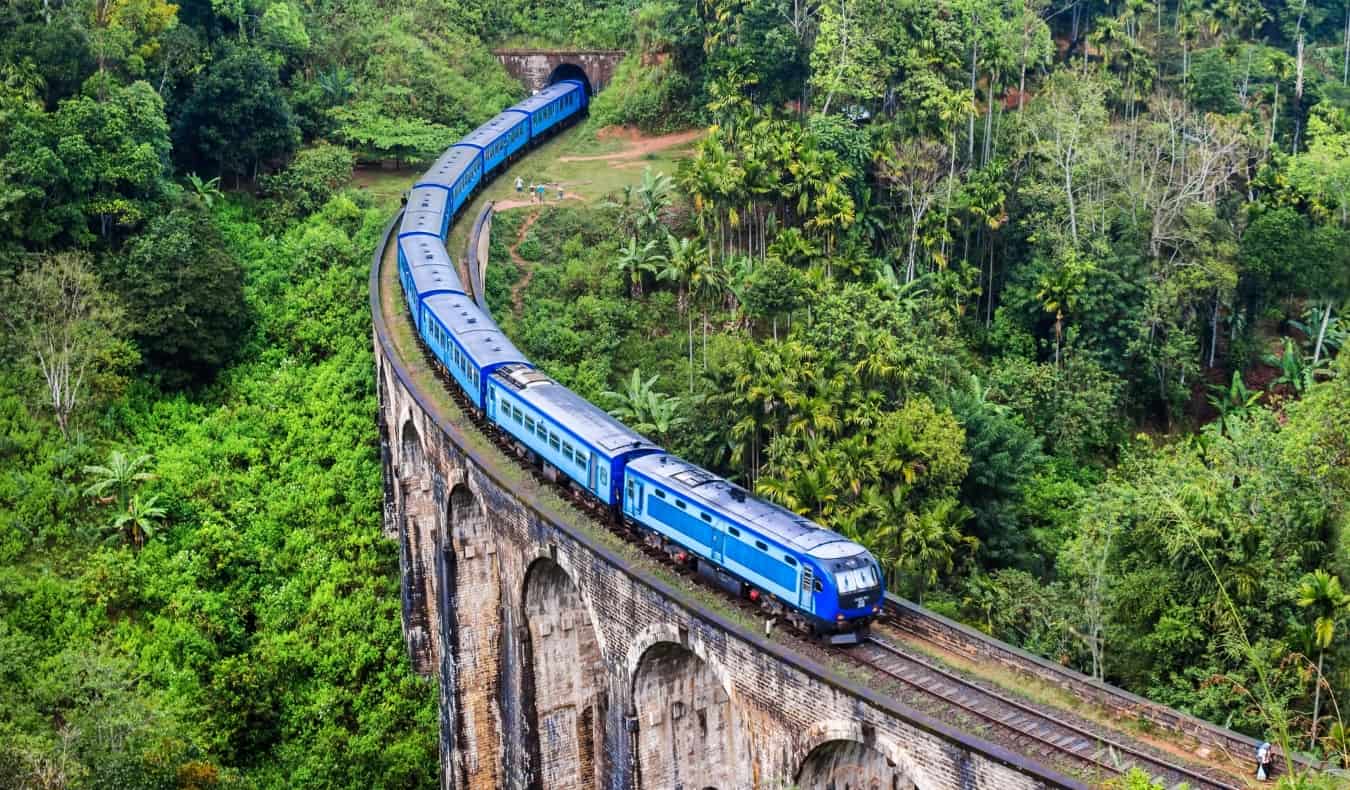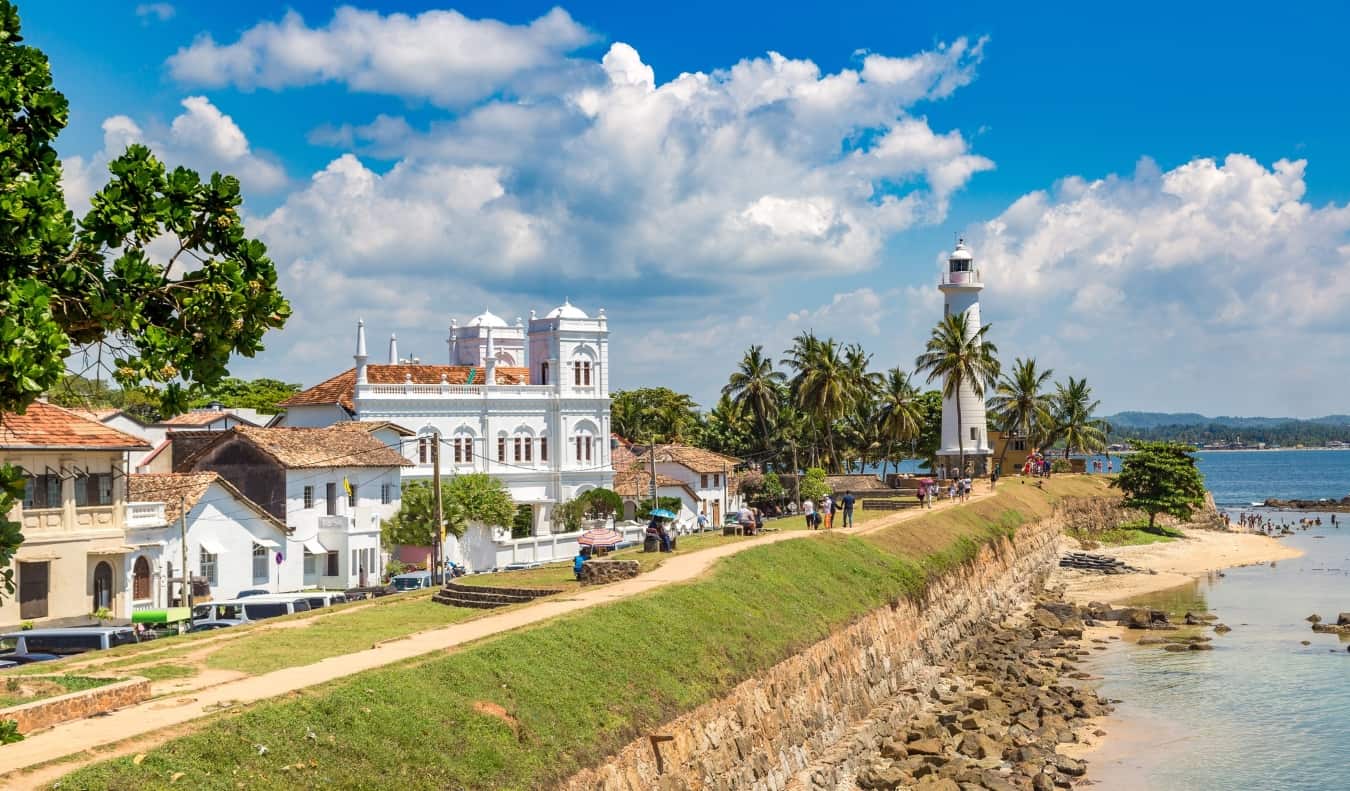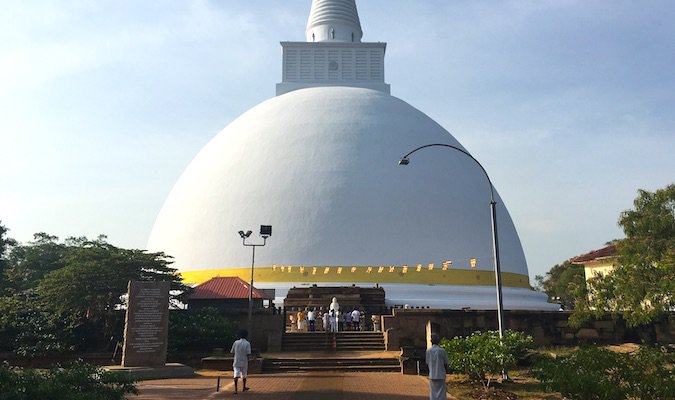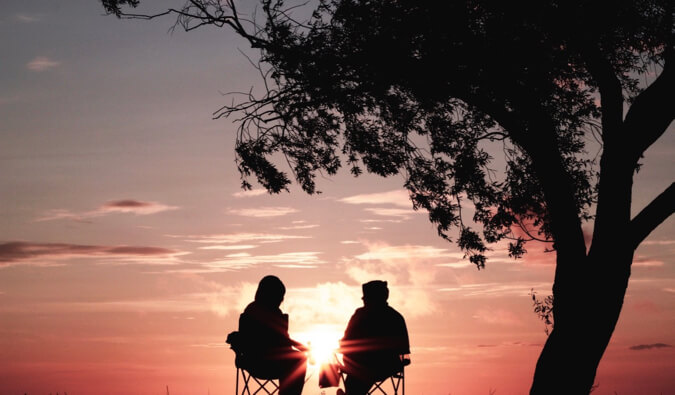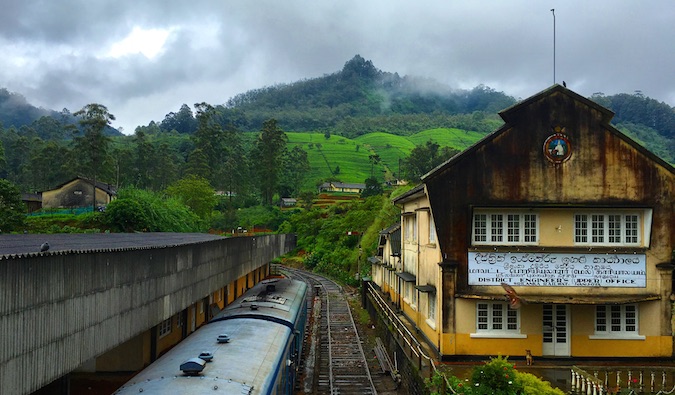
Last Updated: 10/9/2023 | October 9th, 2023
My visit to Sri Lanka — a jewel–shaped country in the Indian Ocean — was an unexpected surprise. I didn’t have a lot of expectations for the trip. But it turned out to be an amazing experience. I loved every bit of Sri Lanka: the verdant landscape, the delicious food; the crumbling, overgrown ruins; the abundant wildlife; and (especially) the welcoming locals who took hospitality to the next level.
Traveling Sri Lanka is a relatively easy thing to do. It can be a little chaotic, with overcrowded buses moving along clogged roads where lanes are mere suggestions, and trains packed to the gills with people hanging off the edges (which actually is kind of fun). But English is widely spoken so once you get used to the chaos, it isn’t too difficult to get around.
But there are a few things you should know before you visit Sri Lanka to avoid getting scammed, overspending, and, like me, missing some of the scenic trains!
Here’s my guide to visiting Sri Lanka:
Table of Contents
Sri Lanka Travel Guide: 14 Things to Know for Your Visit
Before we get into some specifics on Sri Lanka, I want to share 14 must know tips for the country! These tips will help ensure you have an awesome trip, stay safe, and don’t overspend!
Travel Tip #1: Get your visa ahead of time – You’ll need to get a visa for entry into the country. You can do this either online starting three days before you arrive, or upon arrival. It’s slightly cheaper if you do it ahead of time, plus you’ll skip the lines at the border!
Travel Tip #2: Don’t drink the water – You shouldn’t really drink the water in Sri Lanka, but as it’s really hot, you’ll want to keep hydrated. Bringing a reusable water bottle with a purifier will help you save money and avoid single use plastic in the process. (My preferred brand is Lifestraw).
Travel Tip #3: Eat the local food– Outside of the major cities of Colombo and Kandy, you won’t find many non-Sri Lankan or non-Indian food options. What you do find is a poor excuse for Western food that is overpriced and often a chain. Stick to the local food! It’s super delicious anyway.
Food, besides being crazy good, is also really cheap in Sri Lanka! Local food costs about 320-950 LKR for a meal of simple dishes like dosas (a kind of pancake), kottu (a dish made of roti (flatbread), vegetables, egg and/or meat, and spices), rice, chicken, and everything in between. At restaurants with table service, you’ll pay closer to 1,500-2,000 LKR.
Travel Tip #4: Don’t expect a party – There aren’t too many chances to drink alcohol in Sri Lanka. Outside the coastal tourist towns and the capital of Colombo, there isn’t much nightlife or opportunities to drink. While you can always crack a beer at your guesthouse, Sri Lanka isn’t home to a big drinking/nightlife culture. Expect your nights to be tame.
Travel Tip #5: Hire the Tuk-tuks – You can hire drivers cheaply. Any tuk-tuk driver will let you hire them for the day. Expect to pay around 10,000 LKR for the day. Moreover, tuk-tuk drivers are pretty honest, except in Colombo, where they will try to scam and overcharge you. Elsewhere in the country, you’ll get a fair deal. There’s no need to try to bargain hard.
Travel Tip #6: Take the airport bus – You’ll most likely be flying in and/or out of Colombo. The blue Colombo Express Bus is the cheapest and easiest way to get from the airport to the city center. It’s just 110 LKR (the same price as the regular bus), leaves every 30 minutes (5:30am-8:30pm), and takes about an hour. In the city, buses stop at (and leave from) Central Bus Stand, Pettah Fort, and Colombo Fort Station. Alternatively, a taxi is about 2,700 rupees.
Travel Tip #7: Travel by train – Train travel, while often slower, is the cheapest (and best) way to get around. The landscapes are beautiful, and there’s something relaxing about sitting at the window watching the country pass you by. Traveling by train lets you connect with local culture in a way that flying between destinations just won’t do (plus, Sri Lanka is so small that taking an expensive short flight doesn’t make sense). Just adjust your expectations on timeliness and speed. Don’t be in a hurry when riding the rails in Sri Lanka!
Some typical train routes and their approximate prices include:
- Colombo to Jaffna (7-8 hours): 2,250 LKR
- Jaffna to Anuradhapura (2.5-3.5 hours): 1,600 LKR
- Kandy to Nuwara Eliya (3.5-4 hours): 2,500 LKR
- Colombo to Galle (2 hours): 1,600 LKR
Travel Tip #8: Book your train in advance – If you are taking the scenic train from Kandy to Nuwara Eliya or Ella (or vice versa) and want a seat, book it in advance online. These tickets regularly sell out, especially in the high season. You can book starting 30 days in advance through the Sri Lankan railway’s website. Just remember to collect your physical tickets from the ticket office before departure.
Alternatively, you can always get a cramped unreserved second- or third-class ticket (where you’ll learn the new meaning of a tight squeeze) on the day of departure. The concept of “sold out” doesn’t apply to “cattle class.”
For more details on train travel in Sri Lanka, I recommend The Man in Seat 61’s guide.
Travel Tip #9: Show up early at Sigiriya – If you are visiting Sigiriya (an ancient rock fortress and UNESCO World Heritage Site that’s probably the most famous landmark in the country), get there when it opens at 6:30am to avoid huge lines and crowds at the site. If you are there after 10am, the crowds are so overwhelming it’s not worth visiting. It takes an hour to walk up as it’s single-file all the way!
Travel Tip #10: Plan around the monsoons – Sri Lanka is affected by two different monsoons, so if you want the best weather during your trip, you’ll want to keep monsoon season in mind. If you want to visit the beaches in the south and west, go in December-March, while April-September is best for visiting the north and east.
Travel Tip #11: Bring temple-appropriate clothing – Dress respectfully when visiting Sri Lanka’s sacred sites. That means wearing clothing that covers your shoulders and knees. You’ll also have to take your socks and shoes off before visiting temples (even if they are outdoors), so bring flip-flops to keep your socks clean!
Travel Tip #12: Day trip to Galle – Galle is only worth a day trip. Don’t stay over in the town. There is not much to do there at all. There was so little to do there I just went back to Colombo instead of staying the night. The same goes for many other towns, especially gateway towns to the national parks (more on that below).
Travel Tip #13: Don’t rush your trip – Looking at the map of Sri Lanka, you might say, “Oh, it’s not that big. I bet I can cover a lot of ground in a short period of time.” You could, but you won’t “see” much. It will be too much of a blur. There is a lot to see and do in Sri Lanka and it takes a while to travel around. (For more on suggested itineraries, see below!)
Travel Tip #14: Learn a bit of history beforehand – I admittedly didn’t know much about Sri Lanka before visiting. But as I’ve said in the past, you can’t know a place if you don’t know its history. I bought a guidebook and a few books about Sri Lanka’s history, and I’m really glad I did as it deepened my understanding of the country before I even arrived.
Visiting Sri Lanka: How Much Does it Cost?
Sri Lanka is a cheap country to visit. Even when you splurge, it’s not that expensive. Overall, I would say you wouldn’t need more than a budget of 10,000-13,000 LKR per day. The country is very cheap, especially if you stick to delicious local or Indian cuisine (the food is so cheap there’s no reason to grocery shop and cook your own meals), avoid the overpriced Western style restaurants (local food tastes much better anyways), travel second- or third-class on trains and on buses, and don’t go crazy with the accommodation.
Even though I was on a budget, I didn’t go as low as I could have (such as staying in dorms every night, eating only Sri Lankan food, doing minimal activities, etc.) and still found it was hard to break the bank. The expensive days in which I took a tour or decided to try some fancy restaurant were balanced out on the other days I didn’t.
Here is a list of prices to help you get an idea of costs in Sri Lanka:
Typical Museum and Attraction Costs:
- National Museum in Colombo – 1,500 LKR
- Half-day tour at Yala National Park – 14,500 LKR
- Temple of the Tooth in Kandy – 2,500 LKR
- Sigiriya Rock – 9,700 LKR
Typical Food Costs:
- Bottle of water – 100 LKR
- Typical curry dish – 420-550 LKR
- Western dinner – 1,500-2,500+ LKR
- Domestic beer – 500 LKR
Typical Transportation Costs:
- Airport taxi – 2,700 LKR
- Train from Jaffna to Anuradhapura – 1,600 LKR
- Short tuk-tuk ride – 100 LKR
What to See and Do in Sri Lanka: Itineraries By Region
Where should you go in Sri Lanka? Everywhere – if you have the time! Most travelers focus on the southern half of the country, with its hiking and beach towns. After decades of war, the north has a legacy of destruction that has yet to go away.
Sri Lanka may look like a small island, there is a lot to see and do there! More than I imagined. Anuradhapura and Sigiriya both have amazing ancient ruins. Kandy is filled with hiking treks, a big Buddhist temple, and a butterfly garden. Nuwara Eliya is known for its hiking, Tissa is the gateway to Yala National Park (which has elephants and leopards), and Galle is a beautiful old Dutch fort town.
Though I originally had planned to explore only the south due to my limited time there, I was offered the opportunity to talk to a member of Parliament in Jaffna up north and learn about the Tamil war, so I rearranged my route to spend more time in the north.
I was glad I did. Seeing the north gave me an added perspective on a portion of the country without hordes of other tourists. In fact, in my time up north, I saw only four Westerners.
So…where should YOU go with so many places to explore?
My Suggested Sri Lanka Itineraries
I would break your Sri Lanka travels into two parts — the north/center and the south — and focus on one of those regions. There’s simply too much to do in the country and travel (buses and trains) around the country is too slow to try to cover so much ground in a limited time.
Unless you have more time, then the world is your oyster!
Southern Route (two weeks): Colombo – Hikkaduwa – Galle – Mirissa – Tangalle – Tissa – Ella – Nuwara Eliya – Kandy – Colombo
Northern Route (two weeks): Colombo – Nuwara Eliya – Ella – Kandy – Sigiriya – Anuradhapura – Trincomalee – Jaffna – Colombo
North and South (four weeks): Colombo – Jaffna – Trincomalee – Anuradhapura – Sigiriya – Kandy – Nuwara Eliya – Ella – Tissa – Tangalle – Mirissa – Galle – Hikkaduwa – Colombo
If you have a month, you could do this entire route plus add in the coastal towns of Arugam Bay and Negombo. With two weeks, focus on either the southern coast or the central/northern areas.
One thing to know is that once you’ve done the major things in a city, there’s very little reason to stay. For example, Tissa is the gateway to Yala National Park. Tour operators run most tours in the early morning (a higher chance of seeing animals) so if you took one of those tours (like this one offered by local tour operator Shehan Safari), you could be on a bus moving on to your next destination by lunchtime. There’s really not much else in the town.
The same could be said with Jaffna. Tick a few boxes and then move on. Galle is more a day trip from a nearby beach town than a place to spend a few days. Sigiriya and Dambulla can be done in two nights (though I added an extra night because I liked the family I was staying with).
I’d recommend spending more time in Nuwara Eliya, Ella, Kandy, Arugam Bay, Trincomalee, as those places have more activities and are worth staying longer in.
Where to Stay in Sri Lanka
Like everything else, accommodation in Sri Lanka is super affordable. There are a lot of cheap accommodation options throughout the country. Hostels are really basic (fan, mosquito net, electric shower) but at 2,250-3,200 LKR per dorm bed, you can’t go wrong.
Guesthouses are more plentiful and affordable, with private rooms that have an en-suite bathroom starting at 7,000 LKR USD per night. You’ll usually get breakfast with your room too.
Here are some recommendations for places to stay around the country:
- C 1 Colombo Fort (Colombo)
- Palitha Home Stay (Sigiriya)
- Jaye’s Home Stay (Kandy)
- Backpacker Galle Hostel (Galle)
Sri Lanka is an easy country to visit, and with a few tips, you can travel there with ease. This is a very budget-friendly country, even if you go nuts on the attractions and tours. I didn’t spend a lot of money, averaging just 11,500 LKR per day. (Any expensive days will be balanced out with the cheap days where you just walk around, hike, or sit on the beach!)
Sri Lanka may be small but it packs a powerful punch. Take your time to see this land of jungles, waterfalls, monkeys, delicious food, and lovely people!
Book Your Trip to Sri Lanka: Logistical Tips and Tricks
Book Your Flight
Use Skyscanner to find a cheap flight. It’s my favorite search engine as it searches websites and airlines around the globe so you always know no stone is left unturned.
Book Your Accommodation
You can book your hostel with Hostelworld as they have the biggest inventory and best deals. If you want to stay somewhere other than a hostel, use Booking.com as they consistently return the cheapest rates for guesthouses and cheap hotels.
Don’t Forget Travel Insurance
Travel insurance will protect you against illness, injury, theft, and cancellations. It’s comprehensive protection in case anything goes wrong. I never go on a trip without it as I’ve had to use it many times in the past. My favorite companies that offer the best service and value are:
- Safety Wing (best for everyone)
- Insure My Trip (for those over 70)
- Medjet (for additional evacuation coverage)
Looking for the Best Companies to Save Money With?
Check out my resource page for the best companies to use when you travel. I list all the ones I use to save money when I’m on the road. They will save you money when you travel too.
